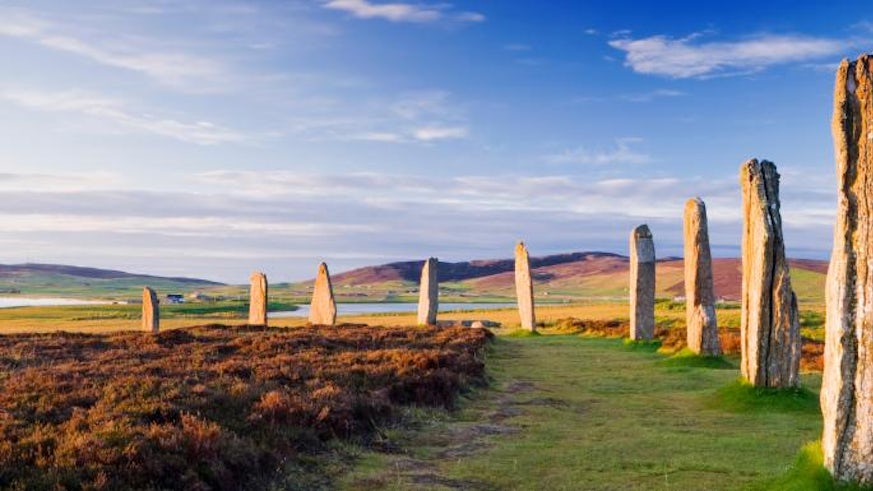Fluctuating fortunes of one of UK’s world heritage sites revealed
20 Medi 2017

Picture of Prehistoric Orkney changes through new scientific dating study in internationally-respected journal Antiquity.
How prehistoric descendants lived, farmed and buried their dead in one of Western Europe’s most important Neolithic regions is now under review, following a spin-out study inspired by a wider European research project headed up by Cardiff University, in collaboration with Historic England.
The study indicates communities experiencing rivalries and tensions, with constant and rapid change over the centuries of development in Orkney, the archipelago off the north-eastern coast of Scotland.
The new study, published in Antiquity journal this month, challenges the previously understood development of prehistoric life across Orkney. The study applies the same methodology as the wider series of case studies across Neolithic Europe in The Times of Their Lives, the five-year Europe-wide study funded by the European Research Council.
Now in completion phase, The Times of Their Lives has demonstrated a host of more dynamic and punctuated sequences than previously suspected in prehistory.
The new findings focus on the key period of development in Orkney c.3200-2500 BC in much greater detail than previously possible, based on the interrogation of more than 600 radiocarbon dates.
It uses a Bayesian statistical approach to combine calibrated radiocarbon dates with knowledge of the archaeological contexts to provide much more precise chronologies.
The new study indicates:
- Orkney was probably first colonised in c. 3600 cal BC
- The archipelago saw expansion and growth from c. 3300 cal BC.
- Settlement peaked in the period c. 3100–2900 cal BC, with a phase of decline c. 2800–2600 cal BC, mirrored by the number of stone houses in use.
- Settlement resumed in c. 2600–2300 cal BC, bringing people together from across Orkney into a sacred rather than domestic landscape, now away from the Brodgar-Stenness peninsula of western Mainland.
The study also throws up intriguing complexities in Orkney’s development:
- Changes in burial practice Dating reveals an overlap between the construction of different kinds of burials tombs from passage graves to large stalled cairns in the later fourth millennium cal BC
- Pottery practice development. A new pottery style, flat-based Grooved Ware, characteristic of the Late Neolithic in Orkney is embraced, replacing the round-based pottery of earlier Neolithic inhabitants.
- Continental Europe contact. The non-native Orkney vole Microtus agrestis first appears c. 3200 cal BC. Significantly still found today on Orkney and the European continent but not in mainland Britain, the vole was probably introduced via direct long-distance sea travel between Orkney and the continent. The study therefore also considers whether new people from continental Europe were part of this complex cultural scenario.
Professor Alasdair Whittle, Principal Investigator of The Times of Their Lives, said: ‘Visitors come from all over the world to admire the wonderfully preserved archaeological remains of Orkney, in what may seem a timeless setting. Our study underlines that the Neolithic past was often rapidly changing, and that what may appear to us to be enduring monuments were in fact part of a dynamic historical context.’
Leading the Orkney study, Professor Alex Bayliss of Historic England said: “People in the Neolithic made choices, just like us, about all sorts of things – where to live, how to bury their dead, how to farm, where and when to gather together – and those choices are just beginning to come into view through archaeology. This study shows that new statistical analysis of the large numbers of radiocarbon dates that are now available in British archaeology really changes what we can know about our pasts. It’s an exciting time to be an archaeological scientist!”
Famed for its well-preserved stone houses, stone circles and elaborate burial monuments, Neolithic Orkney has held World Heritage Site status since 1999. Breath-taking sites rich in archaeological significance in Orkney include the Ring of Brodgar and Stones of Stenness, the settlement of Skara Brae and Maeshowe passage grave.
The new study Islands of history: the Late Neolithic timescape of Orkney appears in Antiquity (issue 389, October 2017, doi:10.15184/aqy.2017.140).
